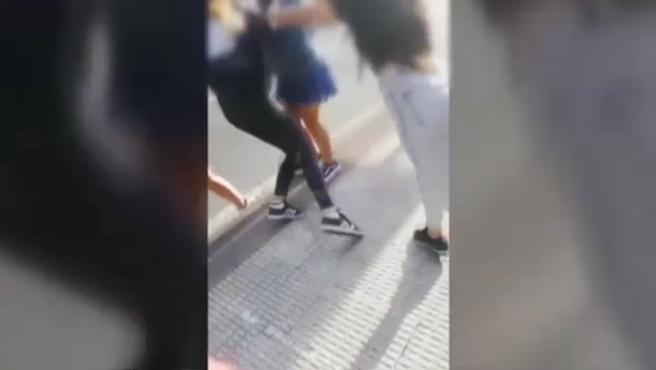There is an increasing number of news reports that warn of the risks that viral challenges bring with them . Especially popular with teenagers, challenges such as The Skull Breaker, The Preppy Hunt, Vacuum Challenge or The Blue Whale have led thousands of young people to endanger their lives and those of other people without considering the consequences that they may entail.
And although it is difficult to understand what is attractive to anyone, tripping another, hitting children living in upper-class neighborhoods or vacuum packaging with a vacuum cleaner, experts point to three main explanations for this type of behavior among adolescents : first, the lack of an attractive adult life expectancy; second, having been raised in a family environment that lives with its back to its own grief; and last but not least, the interaction with other adolescents who are grouped with these related factors. We analyze these factors one by one with the help of two experts from the Open University of Catalonia.
Feel connected
As we’ve already mentioned, sharing challenges can make young people feel connected during their transition to the adult world . A stage that, as Enric Soler, tutor of the UOC degree in Psychology, explains, is a stage that somehow resembles a duel . “It is about mourning the loss of the body and childhood privileges and integration into the adult world,” says this highly complex grief expert.
The specialist explains that most young people feel very alone in this transition : “Neither children nor adults understand them. The natural life cycle is to go to the adult world, which is constantly challenged, but while this transition lastsThey can only satisfy their gregarious needs by sharing challenges , feeling integrated into their world, that of adolescents, “he assures.
Teen
The importance of early detection of mental illnesses: “They debut in adolescence but are gestated at earlier ages”
Experts also warn of the serious repercussions that the current change of scene from analog to digital entails. According to the study Maladaptive use of ICT in adolescents: profiles, supervision and technological stress , more than 60% of adolescents use ICT (short for Information and Communication Technologies) without supervision, and almost half, 45% , has an inappropriate use of ICT , which means that they do not use them in a responsible way. To this must be added the so-called ‘dictatorship of the like’, which consists of doing whatever they deem necessary to gain more popularity.
Social networks can also generate a harmful “resonance chamber” effect, as indicated by José Ramón Ubieto, psychoanalyst and collaborating professor at the UOC’s Studies in Psychology and Education Sciences. “In social networks, messages are received that go in the same direction as what one poses, so violence can multiply when feeling supported by others.”
Of course, there are also teenagers who join in viral challenges of a positive nature. What then does it depend on whether they choose one or the other? In Soler’s opinion, everything depends on the way in which they face this transition towards the world of the elderly. “
Any behavior that is directed towards behaviors typical of adults will be considered healthy behavior . On the other hand, the behaviors of the adolescent who resists to elaborate the mourning of adolescence cannot be considered healthy, since they tend to stagnate or even to an evolutionary regression of the person “, he points out.
Therefore, what happens is that the anger typical of any duel is channeled in a violent or childish way . “A small child can have a tantrum when something does not go as expected, but when an adolescent boy behaves like an enraged child, he has much more physical and mental capacity to voluntarily harm his neighbor , or also himself,” warns Soler.
The psychotherapist Lola Álvarez, author of ‘But what is wrong with you?’
“The impulsiveness of the adolescent is seen as a rebellion when in reality it can be desperation”
On the other hand, experts consider that the current unattractive situation both in terms of employment and economics – to which should be added the collateral effects of the pandemic that we have suffered for more than a year – do not provide any incentive in its wake. to adult life . “It is no coincidence that in the challenge of La hunt del posjo, adolescents who believe they have a worse perspective of what their own adulthood will be violently attack other adolescents whom they perceive with more facilities to develop better in the adult world ( the posh) “, explains Enric Soler.
Little emotional management in the family environment
The attraction of adolescents to these maladaptive viral challenges may also be due to a third circumstance: being part of a family that does not have enough emotional resources to face the losses and that does not share or does not know how to share the feelings that are derived from they.
“In the deaths of family members that are not shared with children, even with the good intention of protecting them from suffering, the child will feel excluded from the feeling of pain for the loss of a significant member of the family, and when they are a teenager they will tend not to share with their parents the mixed feelings of being a child and an adult at the same timeIn such a way that he will go through an adolescence alone, surely with the same good intention: not to worry them, “he says.
Ubieto also adds that the passage from childhood to maturity usually implies for young people to enter into “rites through which they seek to overcome a test. And due to the very nature of the challenge, it is expected that they take on the sidelines of the family . ”For this reason, it is difficult for them to intentionally seek the opinion of adults about it, quite the opposite.
Therefore, the expert advises parents to have informal conversations that help adolescents talk with them and allow them to know their opinion about what worries them, in addition to letting them know what that stage was like for them .
“The way to introduce a responsibility is for them to feel that we care about them, to pay attention to their concerns. A good contribution that parents can share with their children is about what their adolescence was like. individual attention in connection— to the conversation in an attentive presence mode, where what prevails is the bond and not the one-way connection “, affirms the professor.









